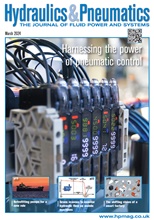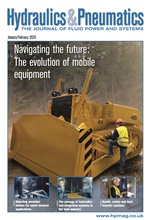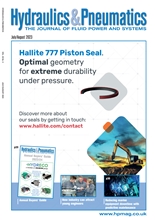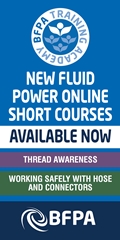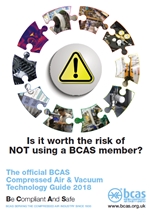- Home » Editorial » Hydraulics
The hybrid advantage
Universal Hydraulik recently introduced a new enhancement to its SCM heat exchanger/cooler range; the SCM/FS. Based on the company’s existing hybrid heat exchangers from the SCM-Series, this new highly efficient ‘failsafe’ heat exchanger is the product of a year’s research and development in collaboration with a well-known offshore equipment supplier.
The SCM/FS-Series utilises a double-tube system, which avoids the danger of mixing hot and cold fluid. In the event of a leakage, the cooler streams the fluid to a designated area where it is then detected by a special sensor. According to Universal Hydraulik, maximum security is ensured by a 100 per cent electronic monitoring.
Another major development of the new offering is that the hybrid-cooler design has made it possible to reduce the cooler size to one third of the previous version. Other key features of the standard model include:
• Leak detector on request with IECEx Certificate.
• Removable sealing cover for cleaning internal water pipes.
• A sea water version is also available.
EKM/SKM
Also available from Universal Hydraulik is the company’s range of EKM/SKM hybrid-design coolers, which feature a combination of a plate heat exchanger (plates on the oil side) and a classic tubular heat exchanger (large tubes on the water side).
The EKM/SKM is described by the company as a logical further development of a classic tubular heat exchanger for use in a wide variety of industrial applications. The EKM/SKM is claimed to be particularly effective due to the additional cooling area, and offers a heat exchange performance of 1000 kW. This is produced by aluminium fins, which are pushed over the bank of tubes with metal-to-metal contact. The EKM range of heat exchangers has a cooling surface of from 0.43 m2 to 56 m2. The EKM/SKM series is constructed of 43 basic units. Other key features of the standard version include:
• Aluminium fins to ensure larger levels of heat exchange.
• Oil flow rates of up to 1200 l/min.
• Removable end caps for easy cleaning of the tubes.
• Optionally available with internal bypass check valve (patented).
• Max. pressure: oil 35 bar /water 16 bar.
Optional features include:
• Sea water version.
• Certifications for marine applications.
• Compressed-air application.
• Water-water application.
• Stainless steel version or chemically nickel plated.
Contamination risk
Michael Uhl, Universal Hydraulik’s managing director, commented that due to their finned design and resultant formed plates, plate heat exchangers can be susceptible to clogging and contamination. “This can make cleaning quite difficult,” he said. “One option is to source a larger model that can be unscrewed, although this would likely be considerably more expensive.”
Uhl explained that tubular heat exchangers comprise smooth tubes on the water side, which can result in considerably less contamination and dirt adhering to the equipment. He added that the tubular design also makes cleaning more straightforward. "They can be unscrewed, scrubbed and reassembled very easily," he said. Nevertheless, continued Uhl, the more traditional design of tubular heat exchangers can need more space for their required cooling capacity. "However, with Universal Hydraulik's hybrid heat exchanger concept the heat exchanging surface on the oil or air side has been substantially enlarged through the use of plates drawn over the water tubes. The result is a cooler that is as compact as a plate heat exchanger."
Fully tested
Uhl pointed out that Universal Hydraulik's coolers are all fully tested three to four times during production. Moreover, the robot-welded coolers are claimed to be 100 per cent clean inside, and their performances are validated on Universal Hydraulik’s own test stand.
.
-
Smart Manufacturing & Engineering Week
05 - 06 June, 2024
NEC, Birmingham -
HILLHEAD 2024
25 June, 2024, 9:00 - 27 June, 2024, 16:00
Hillhead Quarry, Buxton, Derbyshire UK



